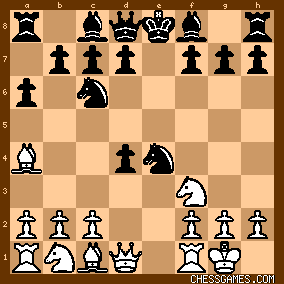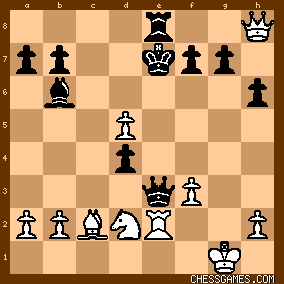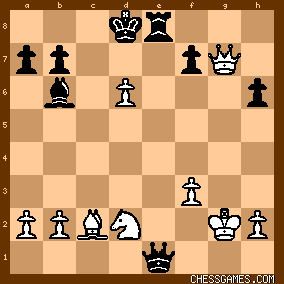(Latvian spelling Dr. Pīrss Pauls Fēlikss Bols)1 Piers Bohl was born 23 October 1865 in Valka, Latvia. His father was a merchant. Though his family did not have an academic background, Bohl entered a German school in Viljandi, Estonia and later studied physics and mathematics at the University of Dorpat (now Tartu), Estonia. He graduated in 1887 with a degree in mathematics and went on to earn a Master's degree in 1893 on quasi-periodic functions.2 During his studies in Estonia, Bohl proved himself to be an ambitious and talented amateur chess player. Chess problemist and Baltische Schachblatter editor Friedrich Amelung took notice of his play, publishing his opinion that "Student P. Bohl from Valka is an ingenious chess player. His game, however, has not yet fully developed due to a lack of strong opponents."3 (p.141) In the early 1890s Bohl moved to Riga, Latvia where he would later begin teaching at the Riga Polytechnic Institute. He also began to take part in the vibrant Latvian chess scene. In a letter to Amelung, Andreas Ascharin, president of the Riga chess club, wrote that "Bohl has the potential to become a first-rate master, and is currently the strongest new generation chess player alongside Hans Seyboth ."3 (p.142) Bohl's first serious chess challenge was a first to 5 games match against Seyboth played April - August 1893. Bohl resigned prematurely after Seyboth racked up a +4-0=3 score.3 (p.142). Undaunted, Bohl immediately began a two game correspondence match against Karl Behting , Riga's strongest player, which he managed to draw +1-1=0. This more than respectable showing earned Bohl a place on the City of Riga team which challenged the Russian City of Orel Chess Club to a two game correspondence match in October 1896. He joined a powerful Rigan roster which included Karl Behting, Robert Behting, Paul Kerkovius, August Lueth and Ottomar Heinrich von Haken. Riga won the match 2-0: Orel Chess Club vs Riga, 1896, Riga vs Orel Chess Club, 1896. 3 (p.24) From the close of this match in January 1898 until the end of 1901, Bohl devoted most of his time to his professional studies. He was awarded a Doctoral degree in 1900 from the University of Dorpat, receiving a promotion to full professor at the Riga Polytechnic.2. The breakthrough chess event for Bohl proved to be the very strong Riga chess club jubilee tournament, held November 1900 - March 1901. He finished second with 12.5/15, just a point back of winner Karl Behting, ahead of Paul Kerkovius, Theodore Germann, Eugen Karl Wagenheim, Ottomar Heinrich von Haken, Sergey Fedorovich Lebedev and H von Ehlert. 4 For his sparkling win over Von Ehlert, Bohl received the Pastor Hugenberg Award for best game played in Riga in 1901: H Von Ehlert vs Piers Bohl, 1901 3 (p.144) For the next several years Bohl was occupied with professional duties and mathematics research, and so missed competing for the Riga team in two further city matches. Already he had missed Riga's victory over the City of Moscow in April 1900, and he also found himself unable to compete in the victory over the City of Stockholm Chess Club in October 1904. Bohl did manage to re-join the Riga team for what proved to be a historically significant correspondence match against the City of Berlin October 1906 - April 1908. In the first game Berlin vs Riga, 1906 Bohl contributed a theoretical novelty for black in a popular line in the open Ruy Lopez: 1.e4 e5 2.Nf3 Nc6 3.Bb5 a6 4.Ba4 Nf6 5.0-0 Nxe4 6.d4 <...exd4!?> 3 (p.143) 
click for larger viewRiga went on to win the game, and Bohl's move was dubbed "The Riga Variation," a name it retains to this day. It caused a good deal of excitement in the chess world, and was subsequently analzyed by Emanuel Lasker in his Lasker's Chess Magazine, by Johann Nepomuk Berger in the Deutsche Schachzeitung , by Paul Leonhardt and Dr. Orla Hermann Krause in the Tidskrift for Schack, and by Siegbert Tarrasch in the Berliner Lokalanzeiger. Bohl's contribution in game two of the match was to prove even more dramatic: Riga vs Berlin, 1906. Riga took the white pieces, and after <22...Rhe5>, this critical position was reached: 
click for larger view With their move due to be telegraphed the following morning, the Riga team ended a stormy evening of analysis with the decision to play <23.exd5>, which they believed would retain a winning edge for white. On his return home, Bohl was too excited to rest, and spent several hours on his analysis board. Around 2:00am, he saw the thunderbolt- after 23.exd5 black had a forced drawing line! After the planned continuation 28.exd5 Rxe2 29.Qh7+ Kf8 30.Qh8+ Ke7 31.Rxe2+ black has the surprising resource <31...Qe3+!> 
click for larger viewNow after the forced continuation 32.Rxe3+ dxe3 33.d6+ Kd8 34.Qxg7 e2+! 35.Kg2 <e1Q> black should be able to draw the position without much trouble: 
click for larger viewBohl immediately contacted Karl Behting and showed him the line. Before the deadline, the sleepy team reconvened and found a move that would retain white's winning edge: <23.Kf1>. Riga went on the win the game, and the match.3 (p.143) After the dramatic victory over Berlin, Bohl found less and less time for serious chess. This was due not only to his teaching duties, but also to his mathematical research. His crowning achievement was not to be in chess- today he is best remembered for proving Brouwer's fixed-point theorem for a continuous mapping of a sphere into itself.2 When war broke out in 1914, Bohl was evacuated to Moscow, returning to Riga only after the Russian Revolution in 1917. He was awarded a permanent chair at the University of Latvia, and passed away from a stroke on Christmas day 1921.2 Gone, but not forgotten by the chess world. Mikhail Botvinnik knew Bohl's games well and proved to be an admirer. The perennial world champion's appraisal serves well as a memorial to the chess of Piers Bohl: "Even though his opponents were chess players of all styles, P. Bohl always pursued an open game, tried to attack, eagerly searched for difficult combinations. When it came to protecting himself, Bohl did so reluctantly and without much thought. P. Bohl had a thorough knowledge of variations - no doubt he was studying them specifically. Of course, these were the variations that were typical of those times - open versions of the Ruy Lopez, Four-Knights, and so on. In terms of Bohl's practical level of play, in modern terminology he would probably be on the border between Category 1 and Candidate Master. This is a very remarkable level for a scholar who could only devote his free time to chess."3 (p.144) 1 Val Zemitis, "Encyclopedia of Latvian Chessplayers Vol.II" p.B-90 2 http://mathshistory.st-andrews.ac.u... 3 Gedimins Salmins "Korespondence Sahs Latvija 1877-1944" Liepaja 2005 4 http://www.edochess.ca/tournaments/... Photograph of Bohl courtesy of https://mathshistory.st-andrews.ac.... Consultation games H Seyboth vs Bohl / Svensons, 1896 Bohl / Kupfer / Ellinson vs Steinitz, 1896 |






